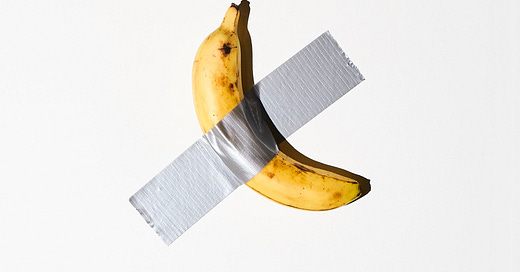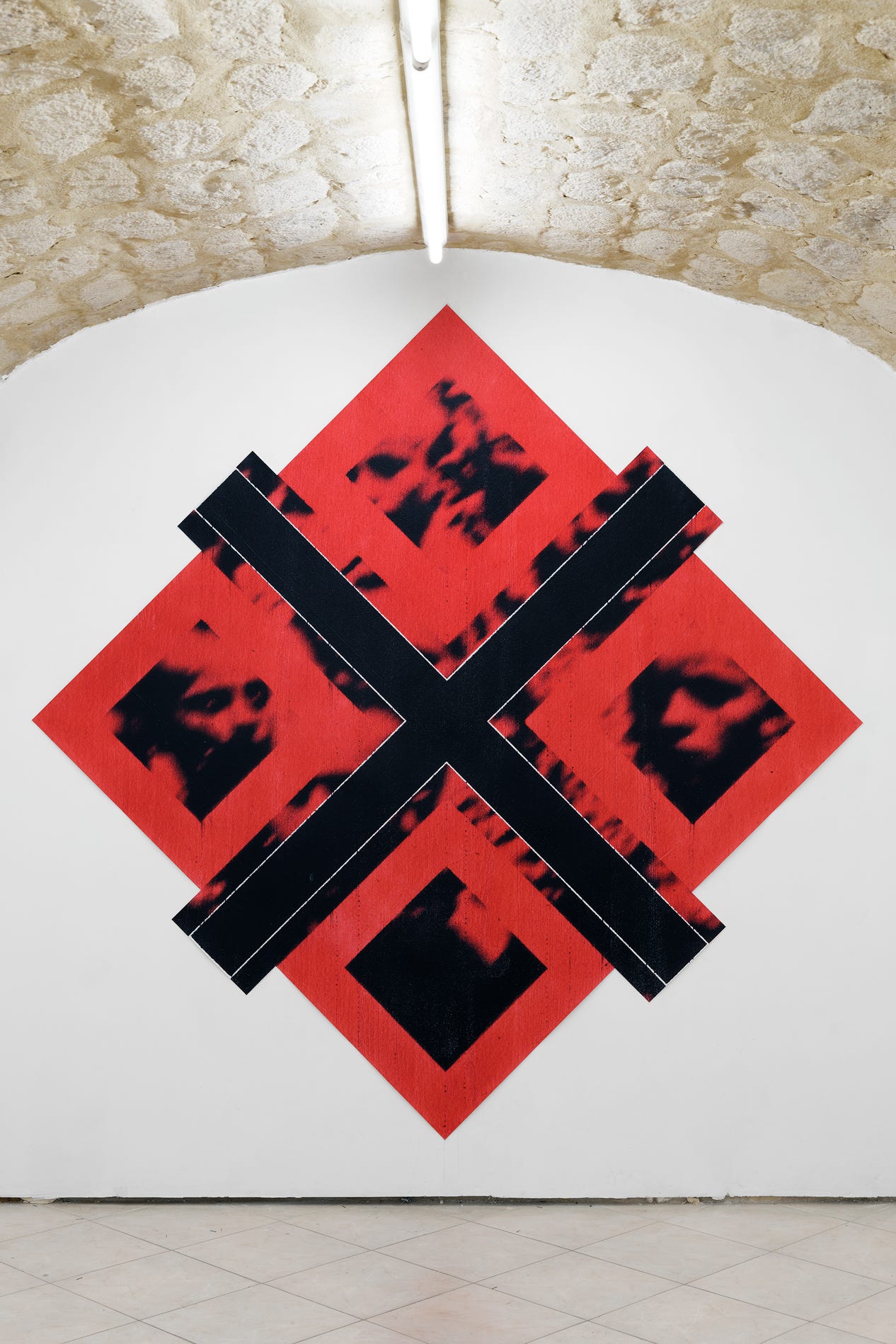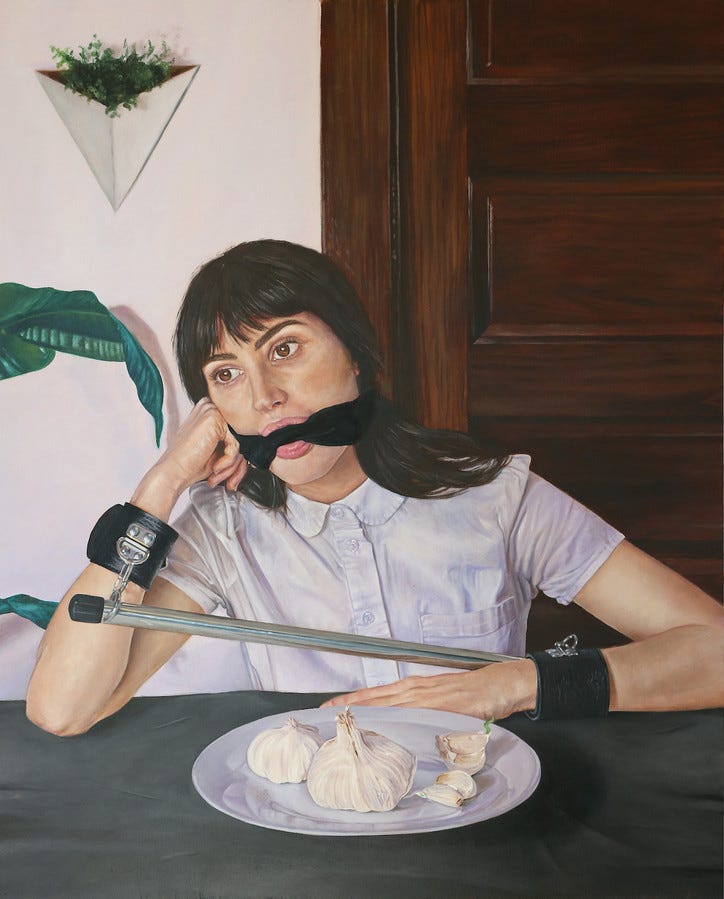Thoughts: Art Market Crash, by Adam Lehrer
Why is the art market crashing so badly, besides the obvious economic factors?
The global art market crash has a lot of factors propelling the crisis: inflation, higher interest rates, fears of slowing economy, upcoming elections and geopolitical crisis among them, but I think there’s another more simpler cause also at the helm of it all: There are TOO MANY FUCKING ARTISTS!
Young artists are obviously getting hit by this market crash harder than anyone, but this was long bound to happen. In a culture where everyone claims to be an artist and way too many people acquire MFAs, art completely loses its mystique. The aura of the art world is no longer one of intrigue, which is the posture with which the collectors approached it throughout the 20th Century, but with boredom. Currently, there are about 2.1 million artists in the market. That number seems obscenely high, and makes it near impossible to deny the fact that there are likely hundreds of thousands of artists who don’t really have vision, discipline, or rigor all vying for attention in the same market place as artists who might actually have talent. Social media is also a factor here, of course, with more people than ever having access to art media at a young age, setting them on a course towards a failed art career in a failing art world when, in all likelihood, they should be working normal jobs.
We don’t have a small sub-culture of “mythical” artists at the forefront of the avant-garde, but literally millions of postgraduates claiming to be artists all at once, clawing each other’s eyes out over a piece of a rapidly vanishing pie.
Furthermore, all artists seem to make art that looks completely the same. The recently shuttered art blog Tzvetnik accidentally spotlighted this problem; as you’d browse the various exhibitions all over the world that it rendered photographically, you’d start to notice how fucking uncannily similiar to one another all the artists being shown by the blog were. You could even pinpoint a set of tropes. Weird occulty symbols rendered sculpturally, mystical-magical figurative paintings, Cronebergian imagery rip-offs, and really terrible identity politicking portraiture.
No one from the standpoint of criticality, for instance, seems to notice the fact that New York-based artist Nina Hartmann’s runic shaped collages, that she neither paints nor draws only appropriates from the Interwebs, are a complete but poorly executed rip-off of the work of Montenegrin artist Darja Bajagic, who does paint. Hartmann even got her MFA from the same school, Yale, and cites her poor, leftist deluded understanding of “noise music” as her primary influence, always failing to mention Bajagic’s clear and demonstrable influence on her work. Conveniently, Hartmann’s flagrant plagiarism is never acknowledged, at least not by critics or interviewers. There’s a fundamental unfairness in these dynamics. Nashville-based artist Shannon Cartier Lucy spent years cultivating the moody figurative paintings that finally broke her into the market only to then be forced into competition with the Chicago-based painter Noelia Towers, who completely copied Lucy’s aesthetic and yet no one with a platform inside the major arts media is willing to address these matters. What is real? What is the copy? What is the copy of a copy of a copy? No one knows, and the hyperreality of art financial speculation is burning out.
Art criticism, historically a means of building enthusiasm for artists, largely doesn’t exist. ArtForum reviews are all vaguely positive reiterations of the galleries’ press releases. How are collectors then even supposed to know what is good? To assume any of these people, collectors that is, actually have taste is a leap, they need dealers, curators and CRITICS to tell them what is good. If a critic can’t identify, for another instance, that Atlanta-based artist Jill Frank’s staged photographic portraits are a complete aesthetic copy of Norwegian artist Torbjorn Rodland’s, how can a dealer? How can a collector?
With so many artists to choose from and no means of distinguishing between what is good and what is fucking garbage, collectors will simply opt out and buy nothing. The legitimately talented have to pay the price for allowing the hacks to have a seat at their table.
I swear to god: I have seen galleries do solo exhibitions of artists that completely rip-off other artists already on their roster, thus devaluing the work of the artist who they have already worked to establish as part of their exhibiting rotations. How can you expect to build a career in an industry that inflates value through uniqueness and intrigue when you can’t even manage to create a work of art authentic to yourself? This then forces artists to justify their practices politically and ideologically in attempts to blackballs collectors into buying their work, preying on bourgeois guilt in desperate hopes that they might be able to pay their own rent next month. The politicization of the work, of course, only makes it worse, and a vicious cycle materializes in the para-social dynamics between artist, dealer, collector and institution.
Social media has already destroyed the music industry, the publishing industry, and (to a lesser extent and in different ways) the film industry. The art world’s levee against the predations of social media was the fact that its artists didn’t require mass consumerism to stay afloat. Artists don’t need to sell a million paintings, they need to sell one painting (or an edition of five, or whatever) to one person for a lot of money. Now, due to economic stress (of course) and what I interpret as an overall collapse in enthusiasm in art, that one person can’t be bothered to part with their cash. The collector’s faith in the market has shaken, and the collector’s faith in art (to the extent that it ever existed) has collapsed all together.
So, it’s not just the economic and political crises of the world tanking the art world, it’s that MFA programs are poorly educating students who become bad artists. Art is really fucking bad. That’s the problem. How can you artificially generate value on something that is common, banal and ordinary? This isn’t supply/demand economics, it’s the practice of the super rich feeling smugly self-satisfied that they enriched an artist that they feel represents their good, decent, moral values OR one that at least they know can accrue in value over time. But with so many artists wandering around painting their little Tumblr Jpegs feeling special and unique, nothing will stand out. I’m pretty damn sure the art world is one hundred percent fucking dead and I am thrilled that I found a way to be creative outside of it. Pour one out for the artists, it’s over for them…
ILLUSTRATIONS:
1. art by Maurizio Cattelan
2, Art by Darja Bajagic
3. Art by Nina Hartmann
5. Art by Shannon Cartier Lucy
6. Art by Noelia Towers
7. image comparing Torbjorn Rodland to Jill Frank









